What Is: A Reach Block

This is a new series I've begun to serve as an ad hoc glossary of specific football concepts/terminology that get thrown around in our articles. The plan is to discuss as they come up and then (probably forget to) link them when we're talking about this stuff down the road.
REACH BLOCK DEFINED
When an offensive lineman blocks a defensive player who's lined up playside of him. For example on this play Mason Cole is going to block this guy:
…on a play going to the right of him. In other words this play is going to the defender's left, and it's Mason Cole's job is to be in the way of that defender going left.
HOW DO YOU DO THAT?
There are lots of O-line technique videos out there but here's the simplest:
The reaching blocker takes a short (that's key) step at an angle toward the defender's opposite shoulder. That puts him in a stance sort of like that of an Olympic sprinter, so his next step can launch him across that defender and get your helmet across the defender's torso. Lock in that victory by putting the inside arm into the defender's outside number, and pivot around to seal. The key is quick feet and a wide stance to not get off-balance—remember the defender is also fighting.
IS THAT HARD?
Yuh huh. The lineman has a fraction of a second between when the ball is snapped and the defense starts to read the blocking to get around that guy, get leverage, and seal the dude being blocked before dude can put a stop to this. It is the hardest of blocks.
Coaches emphasize different talking points but the basics are a short first step toward the outside shoulder, get your arms into him and your head across to seal, all the while keeping your feet apart so don't get knocked off.
Back when (IU OL coach) Greg Frey was at Michigan under Rich Rod, Michigan would try this a handful of times a game, and Molk was better at this than just about anyone I've watched closely. In fact Brian had a Picture Pages in 2008 to show Molk getting a guy lined up outside the guard.
Michigan tried a bunch in 2007, when they were a zone stretch team. This had varying results: Jake Long and (former tight end) Adam Kraus could pull it off occasionally; Justin Boren, Jeremy Ciulla, Alex Mitchell and Reuben Riley were comically bad at it. Against FBS competition it takes a very agile player.
[After THE JUMP: running it, and defending it]
SO WHY ATTEMPT IT?
Because if it works you've got the defense flanked. Michigan is going to make this look from the snap like a zone read (with Rudock reading the backside defender) but Cole's reach block is for the handoff-dive all the way.
Watch what happens to Indiana's DT here.
At the snap:
The tight splits will cut down on the amount of space Cole has to cover, but also restricts the space Smith will have to run. This is going to be a challenging execution.
At the handoff:
Cole is two steps in at this point and has his arm across as Braden releases—Braden's hip gives the defender a little bump to assist Cole, but the DT has fired upfield so that doesn't help much. Cole can give up some ground and even slide into the hole if he needs to but ideally his next step takes him playside of this DT, who by now knows what's happening to him. The sooner the roomier.
At the point of attack:
That DT is now walled off from the play by Mason Cole, and the DE who lined up facing Mason Cole is now walled off by both of them, meaning the offense has erased two players with one block. If Smith sees that hole he's got a long hike over level ground to the end zone with very little nature. But there's one more thing Cole has to do. It's crucial. And even guys in the NFL forget to do it sometimes.
Finish the block.
It's natural once you've got that seal of win to "hit save" or lock it in by planting both feet. That's an invitation for the DT to escape. Here you can see Cole kept moving those feet, keeping his stance wide, and that allowed him to seal the DT behind the runner. There will be no diving attempt as the RB hits the hole.
Except Smith saw the cut lane too late and Braden kind of fell at the knees of the linebacker he released into, so this is stopped for a minimal gain.
Note too that this block took place a yard in the backfield (the black line is the line of scrimmage). This is fine—in fact it's helpful, since defensive linemen are not going to stay in one place off the snap. If the reach target goes upfield, there's room to playside to get around him. If he shuffles down the line that's bad. If he slants, that means there's someone else coming to fill this gap.
SLOW MOTION
SO WHY NOT DO THIS ALL THE TIME?
Hard things are hard, and harder if they're expected, and sometimes the dude you're reaching is an NFL-bound monster who can chuck you aside, out-leverage you, or shove your sealing ass into the hole. Watch Indiana center Jake Reed trying to reach Ryan Glasgow in 2014:
Trying to reach block Ryan Glasgow is like stealing porridge from a bear then taking a nap in his house: not remotely worth the risk.
August 24th, 2016 at 12:08 PM ^
De'Veon's vision on that Cole slo-mo leaves a bit to be desired.
August 24th, 2016 at 1:08 PM ^
I wonder if this was a designed cutback.
The play at first looks like standard inside zone with Smith heading toward the frontside, but Glasgow and Kalis don't look like they're trying to combo and seal the DT. Glasgow almost looks like he's blocking down on the DT. The playside linebacker is filling his gap and the D linemen are flowing (or trying to flow) playside which creates a crease that Smith runs through.
The problem is actually Braden. Because this play looks like inside zone, the linebacker that Braden is supposed to block takes a step to the playside. This gives Braden a very good angle to push the linebacker down the line which would lead to a huge gap for Smith to run through. Instead, Braden just falls over without impeding his man who ends up filling the backside gap and stopping the play for a minimal gain.
August 24th, 2016 at 1:08 PM ^
That was a monster run if he had headed directly to the wide open hole rather than looking at a wall of people for a split second and then heading for the (now not so) wide open hole. I'm not sure what you can do to improve a RB's vision and feel. Smith made some runs late in the season that he had not made his entire career - maybe there's hope.
August 24th, 2016 at 12:22 PM ^
I think Rich Rod's OL was Greg Frey, no?
ETA - ah. Frey's in the tag, Funk is in the body of the post
August 24th, 2016 at 12:15 PM ^
August 24th, 2016 at 12:27 PM ^
Sent from MGoBlog HD for iPhone & iPad
August 24th, 2016 at 1:32 PM ^
I love football in part because it's so much more complex than people think it is. This is my favorite thing about mgoblog.
August 24th, 2016 at 12:26 PM ^
August 24th, 2016 at 12:49 PM ^
August 24th, 2016 at 1:02 PM ^
Also, I can probably give this the Moving Picture Pages treatment. Haven't done one of those in quite a while now.
August 24th, 2016 at 1:07 PM ^
August 24th, 2016 at 1:08 PM ^
August 24th, 2016 at 12:50 PM ^
1. Play design and a post-snap read by the lineman. The play design is a double team zone blocking where Cole and Braden have to take the DT and MLB. The post-snap read determines who takes whom. Since the play is to the right everybody is responsible for the man in the gap to their right. You'll notice in the slo mo that Braden makes intial contact with the DT and then has his eyes on the MLB. He notices that the MLB is coming to fill the A gap to his right so he hands off the DT to Cole in order to take the MLB. Cole's first steps are to his right and since the DT is there he engages but keeps his eyes on the MLB. Once he reads the MLB taking A gap he feels Braden leave the DT and he scoops to seal the DT outside. If the DT had slanted hard to A gap that is Bradens block all the way and Cole would move to pick up the MLB.
August 24th, 2016 at 12:35 PM ^
This is a very informative and accurate post. Just a couple tidbits that I've experienced in my career:
1. A lot of the time, the blocker next to the intended reach block will deliver a "punch", basically just hitting the intended reach target to give the reacher the extra split second needed to engage in a proper position. This usually only occurs if the Defensive player is heading straight up field or slanting play side.
2. I've experienced several "reach" blocks that were actually "combo or scoop" blocks. A combo/scoop is where the G/T, or G/C combo would be responsible a specific gap. This results in the inside man coming off on a linebacker.
Great post though
August 24th, 2016 at 1:21 PM ^
Should have read this before my post below. Very good additional inputs.
August 24th, 2016 at 1:52 PM ^
Yeah but we're not going to teach all the intricacies of zone combo blocking. This post is not meant for the coaching types, obviously. I imagine a pure reach block is rare indeed--you always get a little help from your friends because in zone you have to read the gap the defenders are attacking. As someone else mentioned, if the DT slants Braden has to take him and Cole can release on the MLB.
I just don't want to super confuse people. As Michigan's blocking gets more skilled they'll execute more interesting stuff and we'll be pointing out this or that guy is good because he reached a dude. That's what this is for.
August 24th, 2016 at 4:31 PM ^
I just wanted to offer a little bit of extra input for those who were seeking some of the more complex developments. Your post was phenominal at teaching the basics of the reach block.
August 24th, 2016 at 12:38 PM ^
While we are learning about football terminology here (which, thank you, love these articles), can someone clear something up? "Upfield" as you say here is always in the direction the defense is facing at the snap, correct? I feel like I've seen "upfield" used to refer to both directions in UFRs, picture pages, etc, as if it means the direction you are facing at the snap, regardless of whether you're on offense or defense.
August 24th, 2016 at 1:20 PM ^
Upfield for the defense is typically "into the defensive backfield" where as upfield for the offense is "into the defensive backfield". However, downfield is also "into the defensive backfield" and so it's all just very confusing. Really, you have to try to think about the context and go from there, because it's ever-changing.
August 24th, 2016 at 4:33 PM ^
where you're lined up. To simplify football at its finest, the Offense wants to go upfield towards the endzone to score, and the defense wants to go upfield towards the opposing endzone to stop the offense from scoring. So really, it's a very fickle term that kinda sucks if you think about it.
August 24th, 2016 at 12:39 PM ^
Definitely pressed post once, I blame this new laptop!
August 24th, 2016 at 12:40 PM ^
I think I'm really going to like this series. Great job!
August 24th, 2016 at 12:52 PM ^
August 24th, 2016 at 1:18 PM ^
Some will say a reach is the same as a scoop. Some will say a reach is a frontside version of a scoop (backside). Some distinguish a scoop as a block you need to get playside and seal where as a reach can potentially move to the second level. Some say the difference is between a combo block and a single block. Etc. So the answer will vary from person to person.
Guess I'm not familiar with the term scrape block, so can't help you there (I'm assuming based on the wording it's similar to a reach but just a quick cutoff of the first level on the way to the second level, but not sure).
August 24th, 2016 at 12:55 PM ^
I enjoy learning the details and also enjoy the great writing: "... he's got a long hike over level ground to the end zone with very little nature."
August 24th, 2016 at 12:56 PM ^
What a great idea! Make this fan base even more knowledgeable!
August 24th, 2016 at 1:03 PM ^
August 24th, 2016 at 1:06 PM ^
Tried to do something similar on my blog, never really got it complete enough to maintain. But it's a very nice feature.
A few things to note:
1) There is a difference between the "reach" block you see above and the old fashion Rich Rod "reach" block. Cole here is taking over what is supposed to be initially a combo between him and Braden to the second level. Cole gets position early, so Braden can release quickly. Rich Rod's primary zone run was outside zone which often saw the first level block by-passed by the Braden-equivalent blocker. The major difference for the "reach" blocker is the footwork and the aiming point. If you don't have help, your first step needs to be deeper and often the path wider because you have to win that block without help.
2) There are two main techniques on reach blocks. The method described above is a hands technique. There is another technique called the flipper technique (OSU runs this technique). The hands technique is better for controlling the defender and maintaining the block; the flipper technique essentially is just old fashioned shoulder blocking and simply cuts off the back side defender and allows the blocker to potentially move to the next most dangerous man in the 2nd level.
Obviously, there are other technical details that are likely in the weeds for this exersize. But those are two things the common fan will notice that are different from team-to-team and scheme-to-scheme. Good stuff though; think this is a really worth while feature for this blog and any football fans.
August 24th, 2016 at 1:15 PM ^
Also, if the O-linemen are good enough and there's a defender in the gap where the playside run is supposed to go on a gap play, the O-linemen will stunt on their own so one of them doesn't have to make a reach block. The outside lineman has a good angle to block down and the 'reach' lineman pulls around him. A lot of this is done pre-snap at the line depending on where the defender is lined up.
August 24th, 2016 at 1:27 PM ^
The front side blocker pins the defender down (with a down block) and the blocker further to the backside will pull or fold around him and work to the second level. It's a nice change-up to basic zone blocking, and something many purely zone teams run quite a bit. Harbaugh does run some pin and pull a bit, and also has more called CT pulls on his sweep (rather than OG, he likes to pull the Center a bit).
August 24th, 2016 at 1:52 PM ^
Thank you, both of you.
August 24th, 2016 at 2:28 PM ^
Having enough experience playing next to each is obviously key to being able to make those pre snap reads and communicate without giving it away to the defense. I was a tackle and we ran a lot of pin and pull which I found easier to execute.
August 24th, 2016 at 1:19 PM ^
A reach blocker can easily conflict with his fellow linemen. Just bumping another lineman can botch the scheme. This is another reason why having your starters gel as a unit means an effective line or one of those other types we've experienced in recent years. TG we have Drevno.
August 24th, 2016 at 1:35 PM ^
I also think this is a great idea. I like watching but I hardly pretend I know what's going on most of the time, so the info is appreciated. Hope to see more of these.
I would also add that instead of linking/forgetting to link, what if you added a static section with these articles for reference (like Diaries for example)? That way you can have all of these kinds of articles in one place all the time.
August 24th, 2016 at 1:40 PM ^
How do you think this affects the Newsome vs. Bredeson battle? Does one have more agility than the other, and would that agility be useful enough in the scheme to win the job? Like, does the ability to reach block from the LT position give you that many more playcalling options that it could tip the battle, or is it less significant than that? I'm guessing less significant but I'm no expert.
From the few clips I thought Bredeson looked more agile than Newsome, but I haven't really seen Newsome lately either. Bredeson could kind of fight Gary though, which definitely takes agility. Curious what other people think?
August 24th, 2016 at 1:40 PM ^
I was watching the Indiana game on youtube the other night and Wormley was getting consistently reached (and turned many times) by their left tackle allowing Howard the edge for huge chunks. This seems to go unmentioned when discussing the upside of having a 300lb DE that is also quick. When I read this article I was hoping that this would be included in the analysis. Hopefully Dr Blitz/Gary can solve this otherwise we will have an elite defense in all games except for IU and osu again.
August 24th, 2016 at 2:03 PM ^
I pulled one play from that game for a future Neck Sharpies but Wormley did great on that one. I thought Henry and Hurst were getting abused by this because they were going upfield without affecting the blocker.
August 24th, 2016 at 6:32 PM ^
I feel like our defensive ends were playing too tight in both the OSU and Indiana games. Our ends were basically head up with the offensive tackles on some snaps. If you're aligned that tight, its easy for you to get reached. I can remember screaming at the TV during the Indiana game that our defensive ends need to widen out a bit and maybe even tilt towards the offensive tackle
August 25th, 2016 at 8:16 PM ^
August 24th, 2016 at 1:44 PM ^
Sent from MGoBlog HD for iPhone & iPad
August 24th, 2016 at 1:54 PM ^
I always read the technical articles here but too often they start to go over my head and then my eyes start to glaze over.
Articles like this provide the building blocks for understanding your larger, more in-depth posts.
Great stuff!
August 24th, 2016 at 2:21 PM ^
Sent from MGoBlog HD for iPhone & iPad
August 24th, 2016 at 2:43 PM ^
Sending to my daughter to aid in her education. As you build these things you'll find yourself linking others "What Is:" posts in them. For instance, if I hadn't been on this site for 8 years or so, I wouldn't know what a stretch play is.
In general I find that as I get more proficient at something I take for granted more things that others don't know/understand. I've never have explained something and had somebody complain that I dumbed it down to much.
August 24th, 2016 at 2:54 PM ^
Why not just recognize the D lineman's position relative to the T (Cole) and switch the call to a trap? RB could cut 1 hole to the left and turn the D lineman backside just by his own path. Braden releases 2nd level, Cole's block changes from a reach to a down block and Smith recognizes and shuffles 1 hole to the left and reads Bradens ass for his 2nd level cut direction.
That turns the play into what I would know as a counter-trap.
edit: just noticed that the shotgun formation won't really allow this as the EMOL would be able to blow it up. Under center I think my adjusment works but not in a gun.
August 25th, 2016 at 8:13 PM ^
August 24th, 2016 at 3:41 PM ^
because it takes strength and athleticism to be able to pull this off. If you try to do it against a quick 3-tech DT, the C has no chance of pulling off reach block. When exectuted correctly, two defenders are essentially washed out of the play because DE has to deal with trying to go around the DT who is being reach blocked.
August 24th, 2016 at 5:00 PM ^
Seth--thanks. A suggestion--unless I'm missing it--is a tag that will easily identify this series?
August 24th, 2016 at 7:29 PM ^
August 25th, 2016 at 11:53 AM ^
Kate . you think Rose `s comment is good, last friday I got a gorgeous Lotus Carlton since getting a cheque for $8035 this last four weeks and in excess of ten-grand lass-month . without a doubt it is the nicest-job Ive ever done . I actually started 9-months ago and immediately started to bring home over $70, per-hour .
August 25th, 2016 at 12:46 PM ^
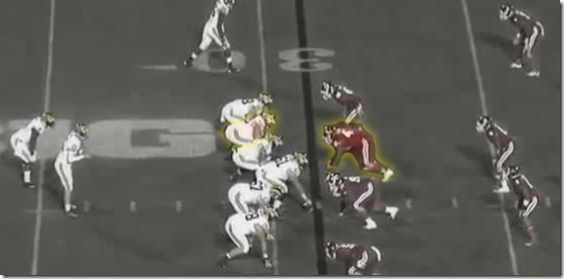
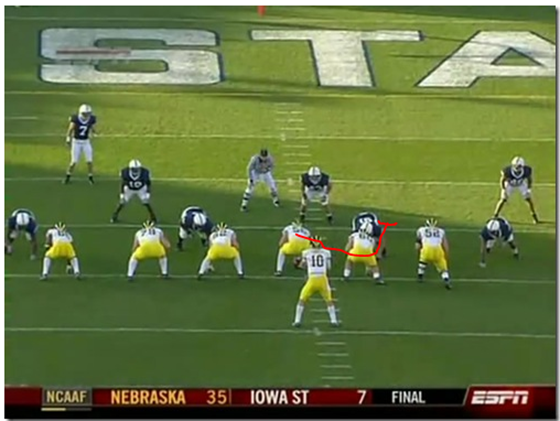
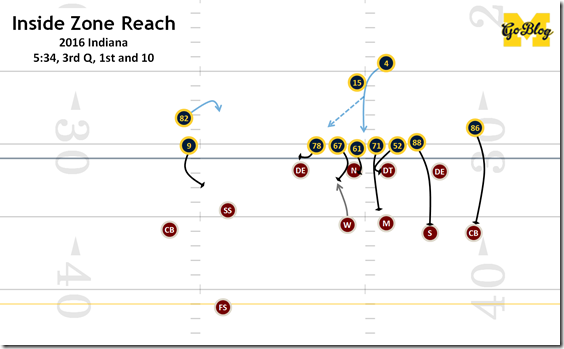
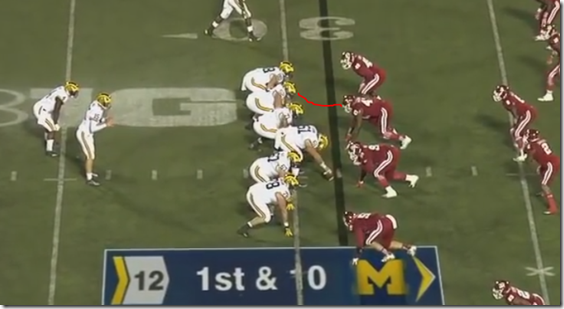
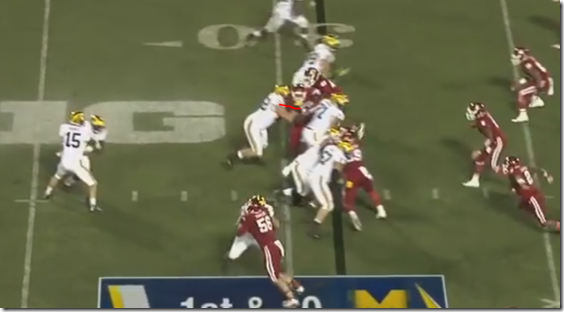
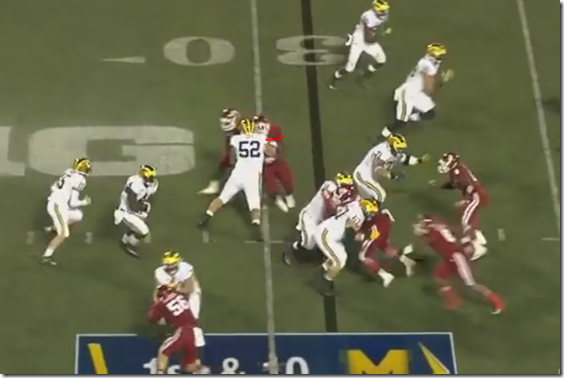

Comments